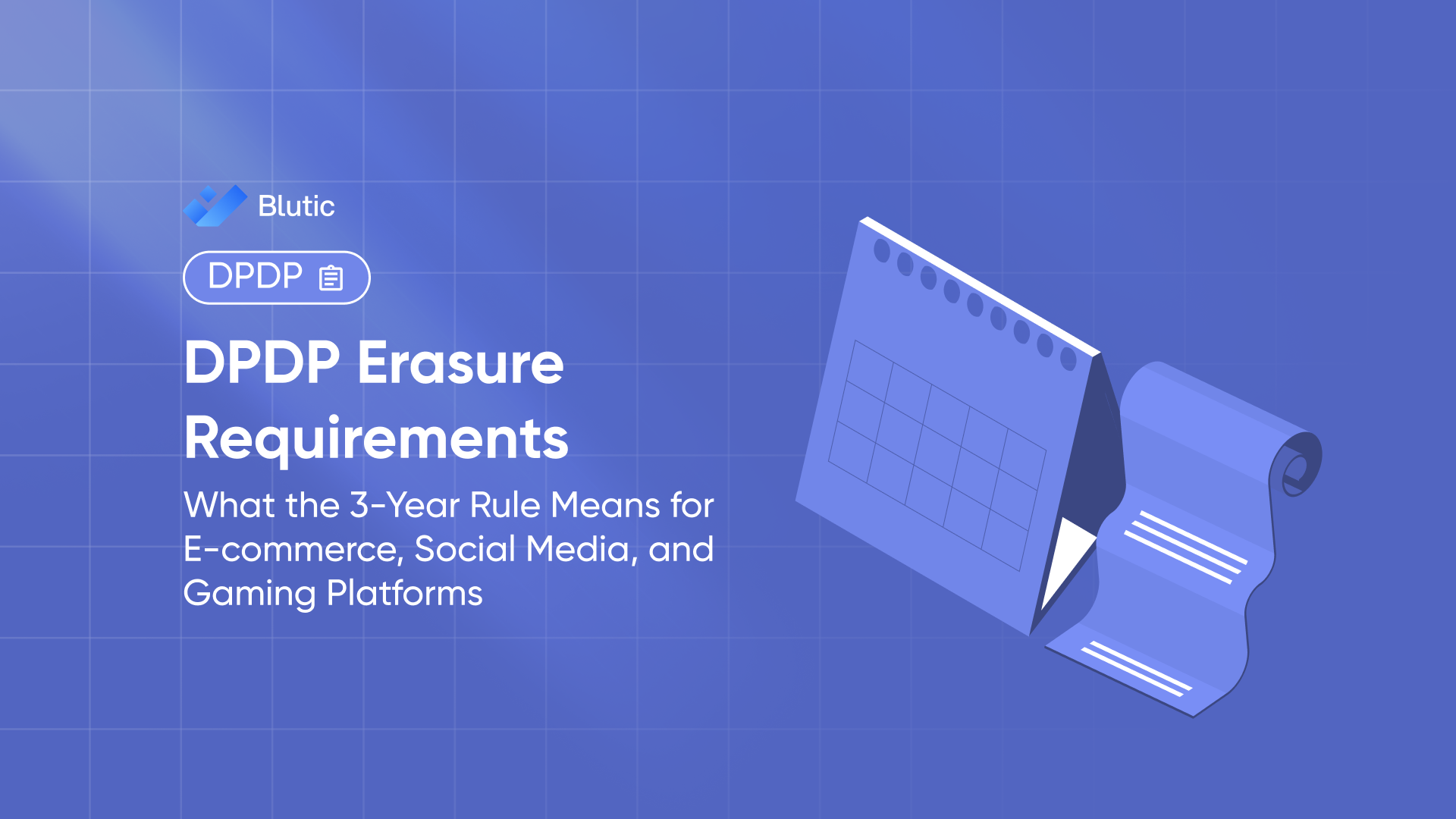Building DPDP-Compliant Cookie Banners: Best Practices for 2025

Building DPDP-Compliant Cookie Banners: Best Practices for 2025
Introduction: From Pop-ups to Privacy Promises
Remember when cookie banners were just pop-ups everyone closed without reading? In 2025, those days are gone.
With India’s Digital Personal Data Protection (DPDP) Act 2023 entering its compliance phase through 2025, cookie banners are no longer cosmetic UX elements they are legal interfaces for collecting valid, informed consent.
This blog breaks down how to build DPDP-compliant cookie banners that don’t just tick legal boxes but enhance user trust, experience, and brand credibility. And how platforms like Blutic can automate it for you.
What the DPDP Act Says About Cookie Consent
The DPDP Act makes consent its core principle. Any digital identifier that can trace a person like cookies requires explicit, freely given, and informed consent before processing.
Key requirements relevant to cookie banners:
- Free Consent: No forced opt-ins or conditional access.
- Informed Notice: Explain why data is being collected and how it will be used.
- Granular Choices: Allow category-based preferences (essential, analytics, marketing).
- Easy Withdrawal: Users must be able to revoke consent as easily as they gave it.
- Proof & Logs: Businesses must store consent records and audit trails.
A cookie banner that fails these standards is a potential liability under the Data Protection Board of India’s upcoming enforcement regime.
Why Cookie Banners Need a 2025 Makeover
Cookie consent is no longer a compliance afterthought. In 2025, well-designed banners influence:
- User trust and brand reputation (transparent design signals credibility).
- Search ranking (Google prioritises privacy-compliant sites).
- Cross-border data readiness (aligns with GDPR and global frameworks).
- Reduced penalty risk from the DPB once fines are active.
Best Practices for DPDP-Compliant Cookie Banners (2025 Edition)
- Start with a Full Cookie Audit
List every script and cookie on your website. Categorise them as:
- Essential: Needed for basic functions (login, cart sessions)
- Functional: Enhances experience (preferences, UI settings)
- Analytics: Collects usage data
- Marketing: Tracks for ads and retargeting
Tools like Blutic’s scanner automatically detect and classify cookies.
- Design Consent Banners That Inform, Not Interrupt
A good banner explains why data is collected without overwhelming users.
Best-practice elements:
- Simple, plain-language text (e.g., “We use cookies to improve your experience and analyze traffic.”)
- Buttons for Accept All, Reject Non-Essential, and Manage Preferences
- Link to detailed cookie policy and privacy notice
- Non-intrusive placement (bottom bar or modal)
- Accessible design for mobile and screen readers
- Enable Granular Consent Controls
DPDP 2025 expects users to make separate choices for each cookie category.
Provide toggles such as:
- Essential (cannot be disabled)
- Analytics cookies
- Marketing cookies
- Personalisation cookies
Every toggle must update the backend in real time so no non-essential cookie loads before consent.
- Respect Withdrawal and Revocation
Users should change their preferences anytime. Add a persistent “Manage Consent” link in the footer and enable instant updates in your CMP. Blutic’s real-time withdrawal API ensures tracking scripts deactivate immediately after opt-out.
- Keep Detailed Consent Logs
Maintain records showing when, how, and for what categories consent was given.
Audit trail should include:
- User identifier or anonymous token
- Date/time stamp
- Banner version and notice text
- Selected preferences
- Withdrawal records
This documentation is your first line of defence during DPB audits.
- Use Multi-Language Support
Section 5(3) of the DPDP Act encourages notices in languages understood by users. Offer banners in English + regional languages based on browser settings (Hindi, Tamil, Kannada etc.).
Blutic automates translation so you don’t need manual versions.
- Adopt Privacy-First Design Principles
A privacy-by-design banner doesn’t just collect consent it builds trust.
- Keep acceptance neutral (no bright “Accept All” bait buttons)
- Avoid dark patterns (hiding Reject buttons or pre-ticked boxes)
- Make the experience transparent and unbiased
- Automate with a Consent Management Platform (CMP)
Manually updating cookie scripts and logs is impossible at scale.
A CMP like Blutic can:
- Auto-detect and classify cookies
- Generate custom banners per region
- Store audit logs and user preferences
- Provide a “Manage My Consent” portal
- Integrate with marketing tools to enforce opt-outs
DPDP Compliance as a Competitive Advantage
By 2025, DPDP enforcement will go beyond penalties. Search engines, app stores, and consumers will favour brands that put transparency and user choice first.
A well-designed cookie banner is your brand’s first impression of trust. It shows you respect users and their data not because the law says so, but because your business values it.
With Blutic, compliance becomes confidence. You turn privacy UX into brand advantage.
Compliance that Clicks
In 2025, a cookie banner isn’t a nuisance it’s a mirror of your brand’s ethics. The DPDP Act demands clarity, control, and accountability and your users deserve the same.
By adopting these best practices and using Blutic’s Consent Management Platform, you can turn a compliance mandate into a moment of trust. Because in the world of data privacy, the best click is the one that’s truly consensual.
Frequently Asked Questions
More Blogs
Get the indise scoop: the latest tips, tricks, & product updates
%20.png)




